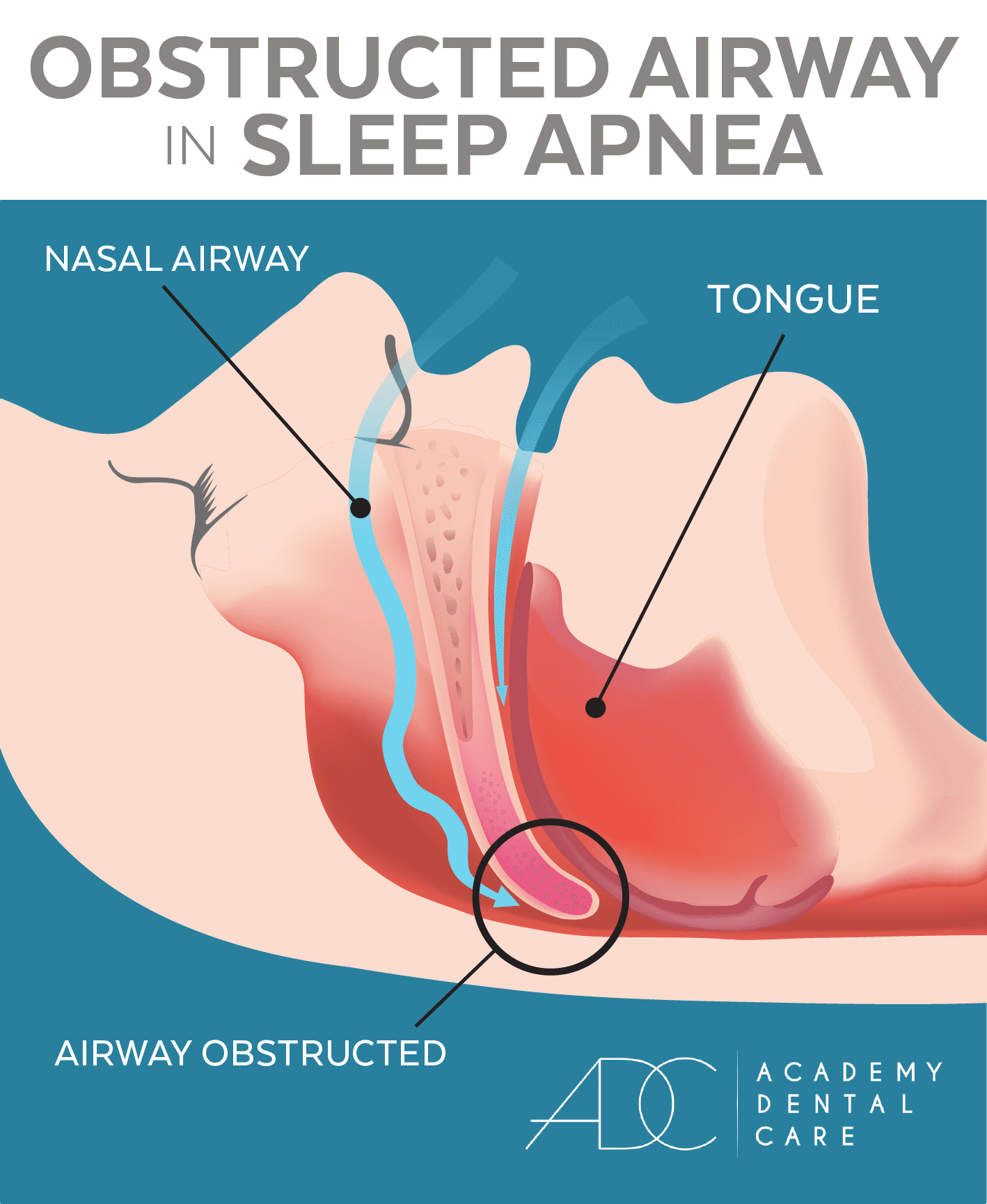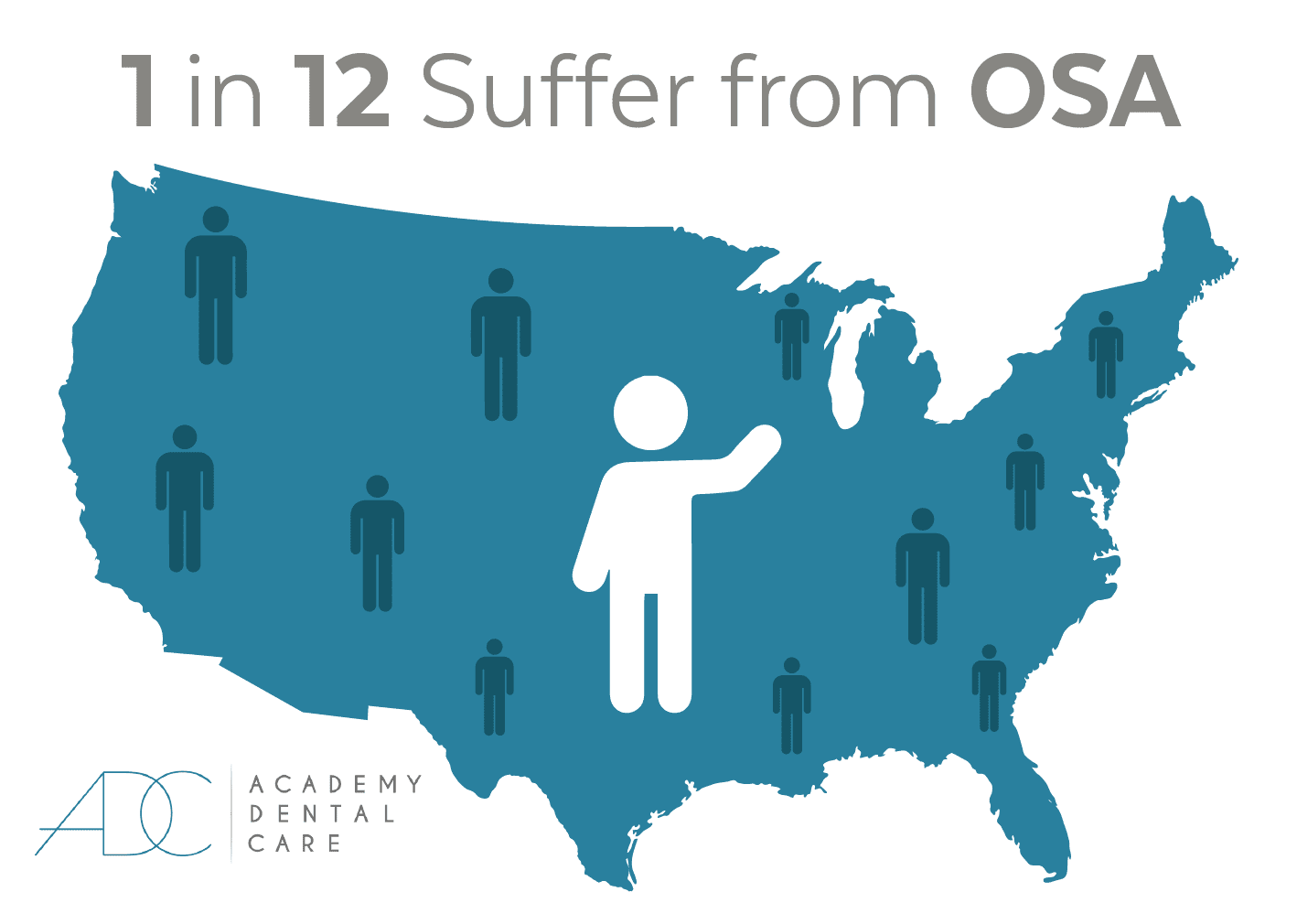What is Sleep Apnea?

Sleep Apnea is a very common, potentially life-threatening, medical disorder that prevents airflow during sleep. It is estimated to effect over 18 million American adults, most of whom are not receiving necessary treatment.
Obstructive Sleep Apnea(OSA) is the most common form of sleep apnea that occurs when the soft tissue in the back of the throat repeatedly collapses and blocks the airway during sleep. These pauses in breathing typically last between 10 to 30 seconds but can last for one minute or longer. These pauses in breathing can happen hundreds of times a night, leading to abrupt reductions in oxygen levels. The brain alerts the body to its lack of oxygen, causing a brief arousal from sleep that restores to normal breathing. The result is a fragmented quality of sleep that often leads to excessive daytime sleepiness, headaches, mood swings, and much more. Most people with OSA may snore loudly and frequently, with periods of silence when airflow is reduced or blocked. Then they make choking, snorting, or gasping sounds when their airway reopens. Often, a person can be completely unaware that any interruptions are happening throughout the night.
Sleep Apnea is a very serious, potentially life threatening condition that, if unaddressed can wreak havoc on your health. In addition to snoring and excessive daytime sleepiness, sleep apnea can cause memory loss, irritability, depression, decreased sex drive, morning headaches and impaired concentration. Sleep apnea patients have a much higher risk of stroke and heart problems, such as heart attack, congestive heart failure and hypertension. Sleep apnea patients are also more likely to be involved in an accident at the workplace or while driving, as they are unable to concentrate the way they would had they gotten a good night’s rest.
Who has Sleep Apnea?
More than 18 million American adults, approximately 3-7% of men and 2-5% of women, currently have moderate to severe sleep apnea, with 80% of cases going undiagnosed. Sleep Apnea can affect both men and women of all ages, however it is more common in middle-aged adults. Sleep Apnea patients are often older, obese and have thick necks, but men and women of any age and body type can be affected. Though more common in men, the risk of sleep apnea in women can increase after menopause. 1 in 12 Americans suffer from OSA, and of the current 326 million people in the United States:
- 10% have mild OSA
- 3.5% have moderate OSA
- 4% have severe OSA

